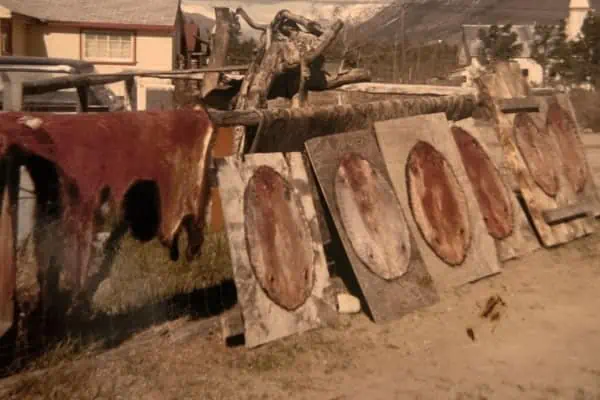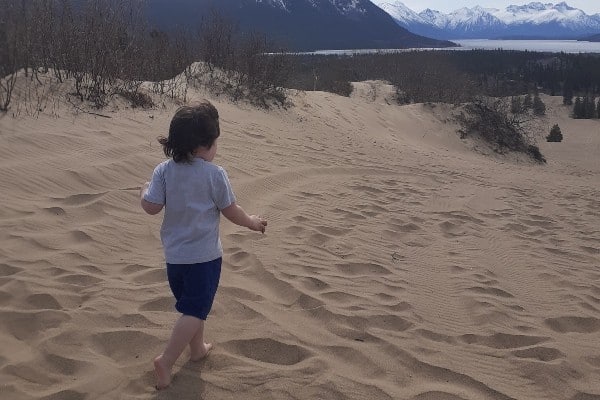Marathon runners spend a lot of time and dedication working towards being the best runner they can be. Countless hours are spent in the gym, running on a track, doing specific exercises designed to enhance their performance. With sled dogs who race it’s no different.
The Yukon Quest is a very long race and as a musher, you want your team of dogs to be in the best possible shape. So how does this happen?
Michelle Phillips is a well seasoned musher in the Yukon. After years of working with the dogs, Phillips has developed a training routine which yields results.
She has been racing for 18 years, completed six Yukon Quests(Alaska-Yukon terrain, each race is 1,000 miles) with a best finish fourth place, and participated in six in Iditarod (Alaska terrain, 1,000 miles) races.
Her and her partner Ed Hopkins own Caribou Crossing which enables the couple to give the dogs a workout year round.
Caribou Crossing is located in Carcross, and the dogs are part of the business, too. In the summer visitors can take cart rides pulled by the racing canines.
While the tour business may be fun and games for the dogs, there is a much serious and disciplined side during training.
Typically, the dogs will start training when a pup is around the six to eight month mark. From there the dogs are put in harnesses to get used to them.
All year round the dogs are exercised using specific training techniques. First, Phillips starts the dogs off with chasing ATVs. Then, the next step is to hook up the dogs to the ATV’s and let them run with it, with the dogs in front. This will continue until there is snow. Once winter starts, the dogs are hooked up to the sled and Phillips will take the dogs for camping trips between 100 to 300 km long.
“We put a lot of training miles on our dogs before we go for a first race – 3,000 training miles (4,828 km) to be exact,” Phillips says.
Aside from training, the dogs receive proper nutrition and extra holistic care such as massages, supplements and acupuncture.
Now you may be wondering, why is it that the Alaska husky breed are used as sled dogs. It turns out this breed of dog is extremely athletic.
“The Alaskan husky is an incredible athlete,” Phillips says. “They will burn 10,000 to 12,000 calories a day in these long races. They can run six to eight hours, sleep for four hours then get up and go again.”
The peak of any athletic runner can be determined in the form of V02, which is used to determine the maximum amount of oxygen consumed during running. The average V02 for a healthy middle aged adult is between 50-60. For Philiips’ dogs, their V02 surpasses that.
“Their V02 max measures over 200,” Phillips says. “These guys love to run.”
So what about the mushers? Now that the dogs are trained, how do they cope with the 10 to 12 day-long sled races like the Yukon Quest? For starters preparation is key. Particular types of food are selected based on weight. Then there is the mental aspect. Being out in the wilderness for so long can present challenges such as bad weather and sleep deprivation. Phillips overcomes these obstacles by keeping a positive attitude, and exercising problem solving skills.
Aside from the rigorous nature of the races, there is also the beauty of the race.
“I see such beautiful country and often see northern lights, along with the moon rising. We feel like a unit and I admire and love my dogs so much it is a very special feeling.”




